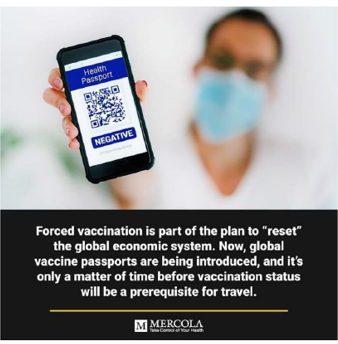Fake news and misinformation surrounding the COVID-19 pandemic that circulates online has practically surpassed the spread of the virus [1]. An analysis of fourteen different studies found that the spread of incorrect information or fake news is directly related to the development of anxiety in populations of different ages [2]. The pandemic itself has caused immense loss and distress for millions of people, and the spread of misinformation indirectly impacts the health and well-being of the population.
Research is increasingly connecting uncritical consumption of misinformation on social media to increased vaccine hesitancy, which can lead to unnecessary deaths [3].

The images above are examples of vaccine and COVID-19 misinformation perpetuated by members of The Disinformation Dozen, a group of twelve individuals including doctors, politicians, and entrepreneurs who utilize their social media platforms to spread fake news to millions of people [4].
During the first few months of the pandemic, a documentary titled Plandemic: The Hidden Agenda Behind COVID-19 was released online and went viral. The show promoted a variety of conspiracy theories, suggesting that COVID-19 was made up in order for profiteering by pharmaceutical companies and hospitals, and that its treatments induce (rather than prevent) respiratory problems and other illnesses. It spread misinformation and conspiracy theories while it also discredited scientific experts’ opinions about the COVID-19 pandemic.
A study conducted in 2021 found that Plandemic was a successful campaign, resulting in increased vaccine hesitancy and anti-lockdown sentiments [5]. It’s likely to have impacted the public’s willingness to comply with public health measures, and therefore, it potentially contributed to the spread of the virus. Plandemic was another unfortunate example of fake news impacting public health.
References
[1] S. Siwakoti et al., “Localized Misinformation in a Global Pandemic: Report on COVID-19 Narratives around the World,” Empirical Studies of Conflict, Mar. 2021. https://esoc.princeton.edu/publications/localized-misinformation-global-pandemic-report-covid-19-narratives-around-world (accessed Jun. 28, 2022).
[2] Y. M. Rocha, G. A. de Moura, G. A. Desidério, C. H. de Oliveira, F. D. Lourenço, and L. D. de Figueiredo Nicolete, “The Impact of Fake News on Social Media and its Influence on Health During the COVID-19 Pandemic: A Systematic Review,” Journal of Public Health (Berl.), Oct. 2021, https://10.1007/s10389-021-01658-z.
[3] D. Allington, S. McAndrew, V. L. Moxham-Hall, and B. Duffy, “Media Usage Predicts Intention to be Vaccinated Against SARS-CoV-2 in the US and the UK,” Vaccine, vol. 39, no. 18, pp. 2595–2603, Apr. 2021, https://10.1016/j.vaccine.2021.02.054.
[4] Center for Countering Digital Hate, “The Disinformation Dozen,” Center for Countering Digital Hate | CCDH, Mar. 21, 2021. https://counterhate.com/research/the-disinformation-dozen/ (accessed Jun. 27, 2022).
[5] S. Nazar and T. Pieters, “Plandemic Revisited: A Product of Planned Disinformation Amplifying the COVID-19 ‘Infodemic,’” Frontiers in Public Health, vol. 9, no. 649930, 2021, Accessed: Jun. 27, 2022. [Online]. Available: https://doi.org/10.3389/fpubh.2021.649930
